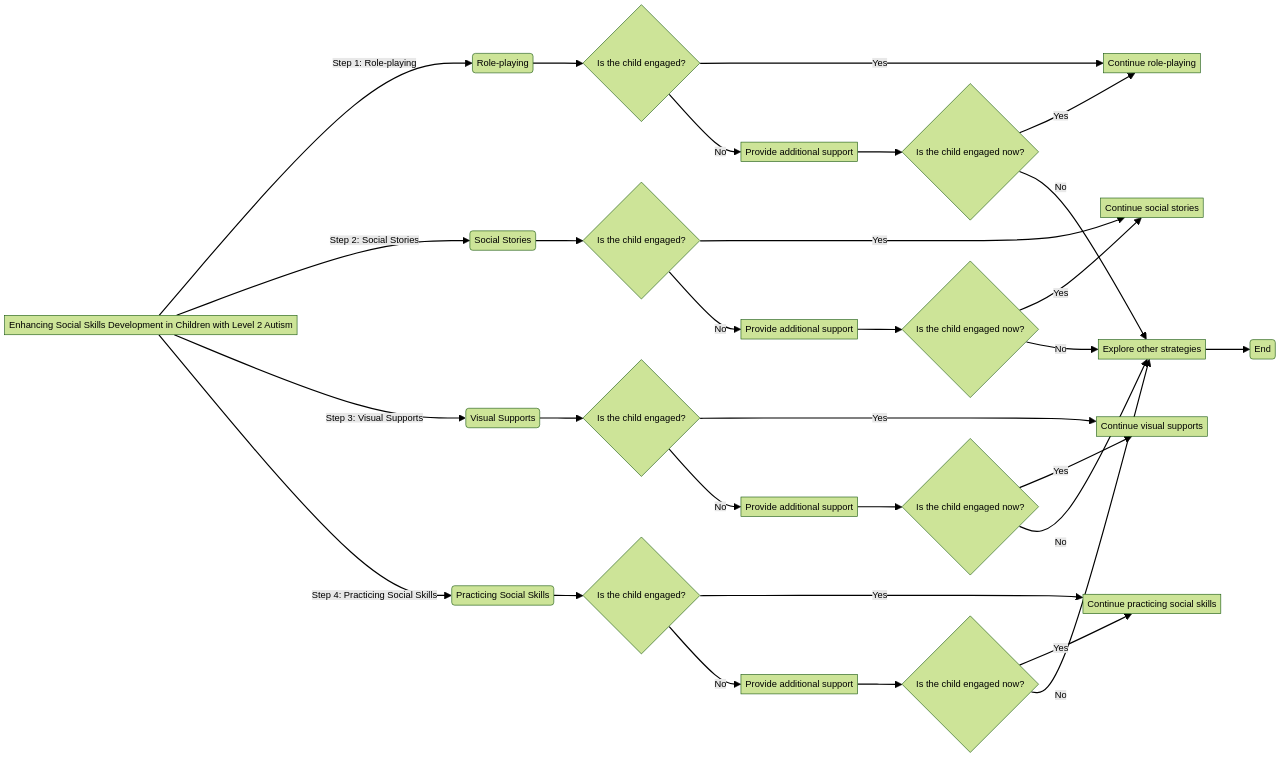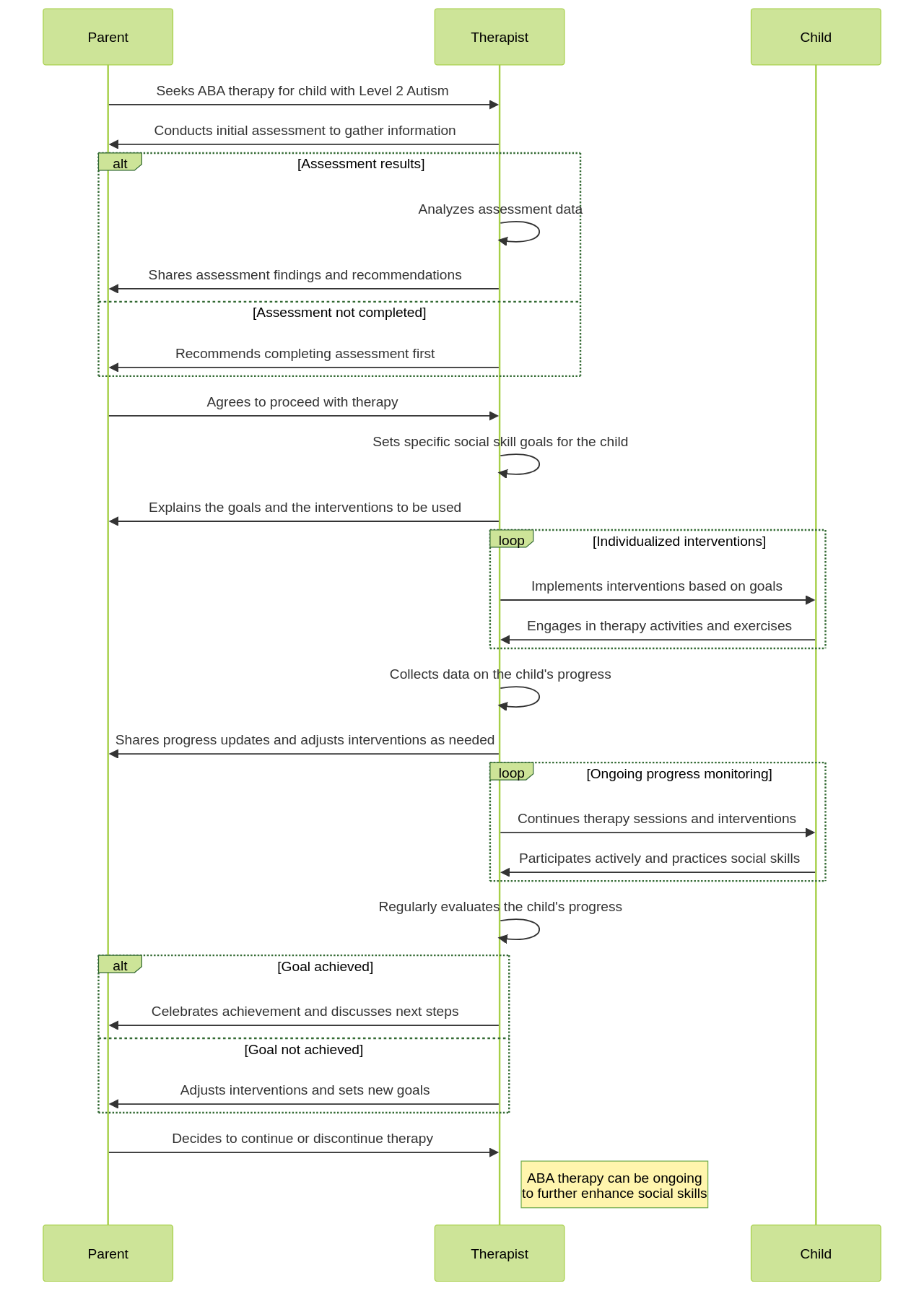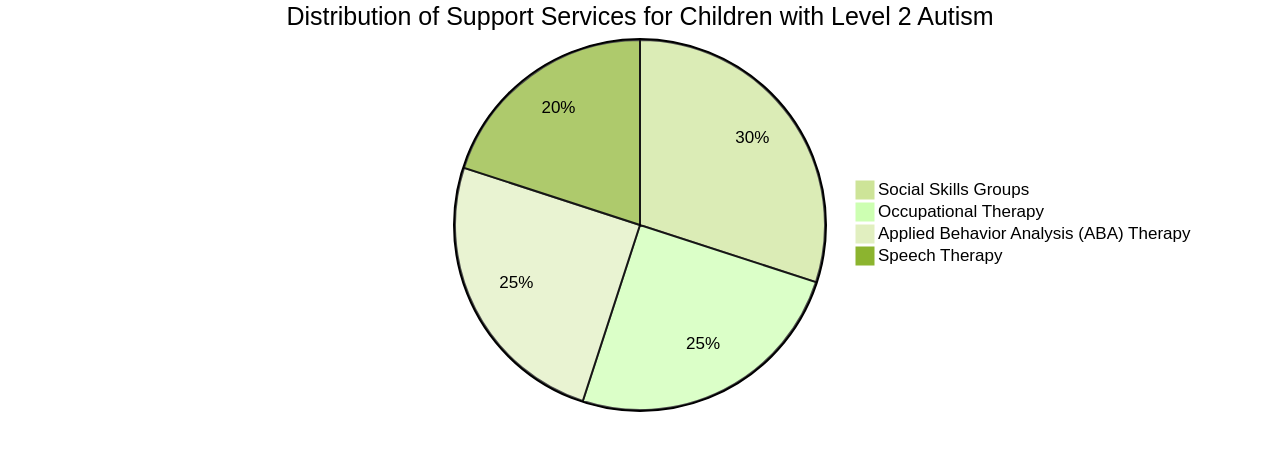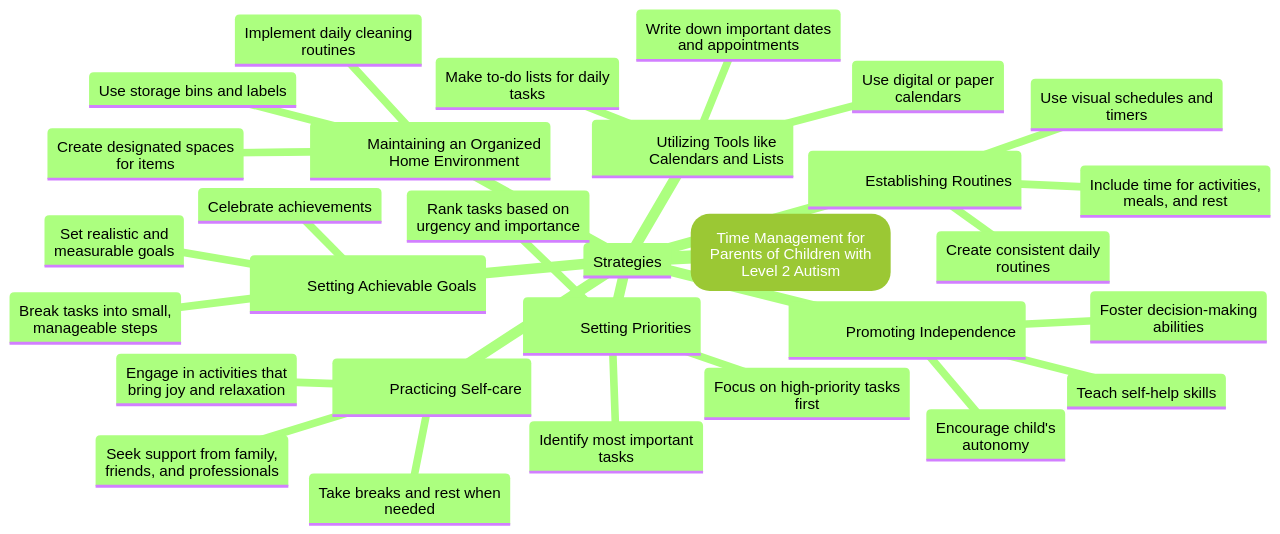Introduction
Understanding Level 2 Autism is crucial for parents and caregivers who want to provide the best support and care for their children. Children with Level 2 Autism Spectrum Disorder face significant challenges in their social and communicative abilities, which can impact their relationships and overall development. Enhancing their social skills is essential, and individualized approaches are necessary to address their unique needs.
In this article, we will explore the key characteristics and challenges faced by children with Level 2 Autism. We will delve into real-life examples of how individualized approaches have helped children overcome these challenges and improve their social interactions. Additionally, we will discuss effective strategies for enhancing social skills and managing repetitive behaviors in children with Level 2 Autism. By understanding these strategies, parents and caregivers can create a supportive and inclusive environment that fosters growth and development for their children
1. Understanding Level 2 Autism: Key Characteristics and Challenges
Children with a Level 2 Autism Spectrum Disorder diagnosis often encounter substantial obstacles in their social and communicative abilities. Interpreting and reacting to social cues, expressing emotions effectively, and maintaining conversations can all be challenging. Their interests might be narrow and they may exhibit repetitive behaviors, which can all negatively impact their ability to form and maintain relationships. Enhancing these children's social skills is therefore a crucial area of focus.
Consider Chris, a third-grader. He struggled to understand and react to social cues and found it challenging to connect with his peers. However, with a focused approach towards developing specific social skills, he was able to interact more effectively with his peers.
Aaron, a fourth-grader, presented a different challenge. His unique learning style was not suitable for traditional classroom settings. By focusing on his specific needs and developing a customized learning approach, Aaron was able to overcome his challenges and improve his social interactions.
These instances highlight the importance of individual approaches when addressing the needs of children with Level 2 Autism. Each child is different and requires a specific approach to overcome their challenges and enhance their social skills.
Discover personalized strategies for your child's social skills development.
There are effective strategies available for enhancing social skills in children with autism. These strategies can help improve social interaction in children with level 2 autism.
Learn effective strategies for enhancing social skills in children with level 2 autism.
Effective communication techniques such as visual supports, social stories, and structured teaching strategies can help these children understand and engage in social interactions better. Additionally, using clear and concise language, providing visual cues, and incorporating the child's interests can also enhance communication skills in children with level 2 autism.
To help children with level 2 autism understand social cues, it can be beneficial to provide them with specific tips and strategies. These can include visual supports, breaking down social interactions into smaller steps, and giving clear instructions on how to respond. Practicing social skills through role-playing or social skills groups can help children with autism learn and apply appropriate social cues in real-life situations.

There are also effective strategies for addressing repetitive behaviors in children with level 2 autism. These strategies can help to reduce and manage repetitive behaviors, allowing children to engage more fully in their daily activities.
Discover effective strategies for addressing repetitive behaviors in children with level 2 autism.
Creating a structured environment, using visual supports, implementing a schedule, providing sensory input, and teaching alternative behaviors are some strategies that can be beneficial.
One effective strategy for expanding the range of interests in children with level 2 autism is to expose them to a variety of activities and experiences. This can help them discover new interests and develop a broader range of hobbies or subjects they enjoy.
Building relationships with children with level 2 autism requires patience and understanding. It is important to focus on developing trust and rapport with the child, as well as creating a supportive and structured environment. Using visual aids and social stories can be helpful in teaching social skills and promoting communication.
In summary, while children with Level 2 Autism may face significant challenges, with the right approach and interventions, they can make considerable progress in their social skills development. This can significantly improve their ability to form and maintain relationships, fostering a more inclusive and understanding environment for them
2. The Role of ABA Therapy in Enhancing Social Skills
Applied Behavior Analysis, or ABA, offers a scientifically validated approach to enhancing the lives of children diagnosed with Autism Spectrum Disorder (ASD), particularly those at Level 2. Its reputation as the "gold standard" for ASD treatment is well-earned due to its foundation in behavioral science, which focuses on imparting crucial life skills.
ABA therapy is renowned for its intensity and individuality. The intensity of the therapy, often referred to as the "dosage," plays a pivotal role in achieving positive outcomes. A robust schedule of up to 40 hours per week has been shown in numerous studies to yield substantial improvements in children's intellectual and educational functioning. This model of early and intense intervention was first demonstrated by Ole Ivar Lovaas in the late 1980s and has been replicated in various subsequent studies.
The individuality of ABA therapy is another cornerstone of its success. Each child's unique needs and challenges are addressed through personalized methods, such as Discrete Trial Teaching (DTT), Natural Environment Teaching (NET), and Functional Communication Training (FCT). These techniques aid children in initiating and sustaining conversations, understanding and responding to social cues, and expressing their feelings appropriately.
ABA therapy isn't a one-size-fits-all solution. The "dosage" can vary, and the choice between comprehensive or focused ABA treatment depends on the child's age, goals, and desired outcomes. For young children diagnosed with ASD, best practices recommend 25-40 hours per week of intense comprehensive ABA. Meanwhile, focused ABA, targeting a smaller set of goals or challenging behaviors, is typically used with older children or as a shift towards lower intensity treatment.
It's essential for parents to choose an ABA service provider whose service model aligns with the empirical research of the behavior analytic community. An example of such a provider is Child's Play Plus, founded by Jason Shaw and Becki Fulcher, which aims to deliver exceptional outcomes for patients of all ages and needs through rigorous and individualized ABA therapy.
ABA therapy is not about changing an autistic child's behavior to match that of a neurotypical child, but rather helping them develop healthier behaviors and improve their quality of life. It's about growth, not change. ABA therapy employs various techniques and strategies, such as teaching appropriate social cues, promoting turn-taking and sharing, and enhancing conversation skills. Through consistent and individualized interventions, ABA therapy can help children with ASD Level 2 develop the necessary social communication skills to interact and engage with others effectively.
Positive reinforcement strategies are often used in ABA therapy to enhance social skills in children with autism. These strategies involve providing rewards or praise for desired behaviors, such as making eye contact, initiating conversations, or sharing toys. By using positive reinforcement, therapists can reinforce these social skills and encourage children with autism to engage in social interactions more frequently and effectively. This approach helps children learn and generalize these skills in various social contexts.

Moreover, ABA therapy can be beneficial for children with autism spectrum level 2 in developing social communication skills. It is a structured approach that focuses on teaching and reinforcing positive behaviors and reducing challenging behaviors. ABA therapy uses various techniques and strategies to improve social skills, such as teaching appropriate social cues, promoting turn-taking and sharing, and enhancing conversation skills. Through consistent and individualized interventions, ABA therapy can help children with autism spectrum level 2 develop the necessary social communication skills to interact and engage with others effectively.
In conclusion, ABA therapy can be a powerful tool in enhancing social skills in children with Level 2 Autism, providing them with the necessary support to thrive in their social interactions
3. Practical Strategies for Supporting Social Skills Development
Boosting social competencies in children diagnosed with Level 2 Autism Spectrum Disorder (ASD) can be accomplished through a variety of practical strategies. Role-playing, a method that allows children to rehearse social interactions in a safe and structured setting, is one such strategy. This practice equips children with the confidence and understanding they need to navigate social scenarios. Role-playing can be especially beneficial for children with Level 2 ASD as it offers them the chance to learn and practice appropriate social behaviors in a structured environment.
In addition to role-playing, social stories serve as an effective tool in the development of social skills. These narrative tools paint a vivid picture of social situations, providing a guide for children on how to respond and behave appropriately. They can be custom-made to align with the child's personal experiences, making them more relatable and easier to understand. Social stories can help children with Level 2 ASD understand social cues, develop empathy, and learn appropriate social behaviors. By presenting information in a structured and visual format, social stories can aid children in navigating social interactions and enhancing their social communication skills.
Recognizing and interpreting social cues is a critical part of social skills development. Visual aids can be incredibly beneficial in teaching children about these cues and the corresponding responses. Visual aids such as social stories, visual schedules, and other visual supports can help children with Level 2 ASD understand and interpret social situations more easily. These aids provide visual cues and prompts to help children learn appropriate social behaviors and responses. For instance, sequence strips can illustrate the step-by-step process of a social interaction, while conversation starters and response cards can assist in initiating and maintaining a conversation.
Family routines and activities offer excellent opportunities for children to practice their social skills. These everyday scenarios can be transformed into learning experiences, reinforcing the skills that the children have been developing. With the advancement of technology, digital resources can also be used as learning tools. For instance, routine booklets can be used to teach children about phone etiquette, such as how to answer calls or make video calls. By making use of these resources, parents can ensure that their children are equipped with the social skills they need in an increasingly digital world.
To ensure the effectiveness of these strategies, it is crucial to maintain consistency. The skills should be reinforced in diverse settings to ensure generalization, allowing children to apply what they've learned in real-world scenarios. Regular practice, reinforcement, and ongoing support are key to promoting the generalization of social skills in children with Level 2 ASD. This consistency will ensure that the social skills they develop will become second nature, ultimately enhancing their ability to interact with the world around them.
In summary, there is a multitude of strategies and resources available to aid in social skills development for children with Level 2 ASD. By utilizing these tools and maintaining consistency, parents and caregivers can support children in developing the social skills they need to navigate through life
4. Navigating Support Services for Children with Level 2 Autism
Navigating the maze of support services for children diagnosed with level 2 Autism Spectrum Disorder (ASD) can often feel challenging. Yet, being enlightened about the wide array of services available can ease this journey. Services such as occupational therapy, speech therapy, and social skills groups can significantly bolster a child's social development.

Occupational therapy, for example, aids children with ASD in enhancing their motor skills and managing daily tasks with greater independence. Furthermore, it can support children in improving their attention and focus, managing sensory sensitivities, and handling repetitive behaviors. Speech therapy, on the other hand, can assist in developing their communication abilities, vital for their interaction with peers and adults. Social skills groups, designed to promote social interaction, can be instrumental in helping children with ASD comprehend and adapt to social norms.
When used alongside Applied Behavior Analysis (ABA) therapy, these services can offer a comprehensive approach to supporting a child's social skills development. Each service has unique attributes that can tackle different facets of a child's developmental needs.
ASD Media can be a guiding light for parents embarking on this journey. They offer an abundance of resources that can help parents comprehend and navigate the different services available, thereby empowering them to make informed decisions that best address their child's unique needs.
The transition from high school to post-secondary education can be a turbulent time for students with ASD. Yet, there are multiple pathways to success in post-secondary education, including specialized programs, life skills programs, and even four-year universities. The key is to assess your child's functioning in different areas, such as their independence in daily activities and academic skills, and match these with the appropriate supports available in the next environment.
Students who are fairly independent and possess cognitive and adaptive skills can pursue college degrees with accommodations provided by disabilities departments. Conversely, students who need more support can seek colleges with specific autism support programs focusing on organizational skills and bridging the gap between students and faculty.
Community colleges can be a beneficial stepping stone for students who need additional support in adjusting to college expectations. Certificate or technical schools offer programs that proceed at a slower pace and focus on specific courses or content areas, making them more manageable for students with organizational and time management challenges.
Post-secondary day and residential programs concentrate on independent living skills, recreational skills, work skills, social skills, and executive functioning skills. Some individuals may opt to find supported or customized work experiences with the help of vocational rehabilitation departments.
Parents should be realistic, objective, and flexible in understanding their child's abilities and support needs to find a pathway to success and happiness. Organizations such as the Organization for Autism Research (OAR) provide resources and information on the transition to adulthood for individuals with autism. Experts like Diane Adreon and Jennifer Feinstein are professionals in the field of transition and adult programs for individuals with autism.
Navigating support services for children with level 2 autism might seem overwhelming at first, but with the right resources and a clear understanding of the child's needs, it can be a rewarding process. The key is to stay informed, flexible, and patient, remembering that every child's journey is unique
5. Time Management and Prioritization Techniques for Parents
Parents of children diagnosed with level 2 autism often find themselves in a whirlwind of responsibilities. However, effective time management and prioritization techniques can serve as guiding lights in such challenging situations.

The first step is to prioritize tasks according to their importance, allowing parents to concentrate their efforts on the most crucial tasks and ensuring the child's needs are met efficiently.
Promoting independence in children is a significant aspect of their personal growth and can free up parents to attend to other pressing responsibilities. This independence can be fostered by setting clear expectations and boundaries for the child.
Maintaining an organized home environment can significantly streamline daily tasks and routines for parents. It reduces time spent searching for items and allows for smoother transitions from one task to the next.
Setting achievable goals is another effective strategy. Parents should remember that perfection is not the goal, and celebrating small victories throughout the day is essential.
Establishing routines and regular schedules can provide a sense of predictability and security for children with autism, which in turn simplifies time management for parents. Embrace the concept of urgency, but remember to set realistic time frames for tasks to avoid burnout.
Utilizing tools such as calendars and lists can help parents keep track of tasks and appointments. Visual aids like these assist in planning ahead and ensuring no important task is overlooked.
In the midst of all this, it's important to explore time-saving services. For example, considering grocery delivery services could free up some time for self-care or other tasks.
Self-care is vital in this journey. Parents need to ensure they are taking care of their physical and mental health to be able to provide the best support for their child. Remember, taking time for yourself is not selfish - it's necessary.
Services like Beyond Booksmart can be a valuable resource for parents. They offer adult coaching and a team of coaches to help navigate challenges and build life skills. Their resources, including blogs, podcasts, events, webinars, and more, can provide additional support and information for parents.
In essence, managing time effectively and prioritizing tasks can help parents of children with level 2 autism to balance their responsibilities without feeling overwhelmed. With the right strategies and resources, it's possible to navigate this journey with resilience and grace
6. Building a Supportive Community: Sharing Experiences and Learning from Each Other
Building a supportive and empathetic community is essential for parents who are navigating the path of raising children with level 2 autism. It's comforting to swap stories, learn from others' experiences, and collectively grow.

This sense of community can be a beacon of hope and strength in this journey.
Organizations like the National Association for the Education of Young Children (NAEYC) play an instrumental role in this regard. NAEYC, a professional membership organization, is committed to promoting high-quality early learning for all children up to 8 years of age. They offer a platform called "Hello", a hub for meaningful conversations, networking, and professional growth. This platform is a repository of resources and opportunities that can help parents understand early childhood development better.
NAEYC's community is organized into various interest forums, such as the Early Childhood Science Interest Forum (ECSIF), where parents and educators can network and discover resources for enhancing inquiry-based science in early childhood. The forum structure ensures that parents can find a space that aligns with their specific concerns and topics of interest.
Another platform that caters to parents and prospective parents is the Immediate Media Company Limited's forum. It is organized into several categories, including conception, pregnancy, babies, toddlers, older children, and family life. Each category is further divided into subcategories like conception, fertility problems, pregnancy loss, breastfeeding, bottle feeding, weaning, sleep, twins, postnatal depression, and more.
A new addition to the list of supportive platforms for parents of children with level 2 autism is ASD Media. It provides an online space where parents can connect, share experiences, and find solace in the shared journey. ASD Media's news section offers articles and resources related to autism support services and effective strategies for social skills development in children with autism. These articles provide insights and experiences shared by other parents, which can be beneficial in understanding the challenges and opportunities involved in raising a child with level 2 autism.
These platforms serve as a virtual gathering place where parents can share their thoughts, initiate discussions, and find solace in the shared experience. The ability to search for specific topics or browse through the latest discussions allows parents to find relevant information and engage in conversations that matter to them.
These supportive communities not only help parents feel less isolated but also equip them with knowledge and resources. They are a testament to the power of shared experiences and collective learning in navigating the unique journey of raising a child with level 2 autism
7. Staying Updated: Importance of Continuous Learning in Autism Care
Understanding the needs of children diagnosed with level 2 autism spectrum disorder and staying updated with the latest developments in autism care is of great importance for parents. This pursuit of knowledge helps them comprehend their child's needs more accurately and allows them to provide the best possible support.
One of the ways to stay informed is by subscribing to informative newsletters, such as those offered by ASD Media. These newsletters provide timely updates on the latest advancements in the field, enabling parents to stay current with research, understand new strategies, and feel more empowered in their journey of supporting their children.
There are several significant developments in autism care. For example, recent studies have explored the impact of infection during pregnancy on the gut microbiome of mice, with potential implications for human health, including conditions like autism. Tools like Spectrum's autism drug trial tracker, which provides information on over 200 clinical trials for autism and related conditions, can help parents stay informed about potential new treatment options.
The FDA has recognized a hair-based autism diagnostic aid as a "breakthrough," although data is still limited. Additionally, a study in Denmark found that adult autism diagnoses often do not follow diagnoses of psychiatric conditions in childhood, highlighting the complexities of diagnosing and understanding autism.
In the area of gene therapy for neurological conditions, a new viral variant has been developed that can deliver genes exclusively to the brain, overcoming a previous barrier. This could pave the way for new treatment options in the future.
Spectrum also offers newsletters to keep readers updated on their latest reports, community news, and noteworthy information. This includes a roundup of news and research on autism knowledge in Russia, brain imaging, and neuro advocacy, as well as a webinar featuring Tony Charman and Catherine Lord discussing the Lancet Commission's recommendations and the use of the term "profound autism."
When parenting children with autism spectrum level 2, it may be beneficial to implement certain strategies to support their development and well-being. Establishing routines and visual schedules, providing clear and consistent communication, using visual supports, encouraging social interactions, and seeking professional support are some of the effective strategies. Remember, each child is unique, so it's important to tailor parenting approaches to your child's specific strengths and challenges.
To understand the needs of children with Autism Spectrum Level 2 better, consider accessing unlimited digital resources, like glossary key terms for promoting social skills in children with autism. These resources offer valuable insights and information to better understand and meet the needs of these children.
Staying informed is not just about understanding your child's condition better, but also about empowering yourself with knowledge and resources to provide the best possible care
Conclusion
The main points discussed in this article revolve around the challenges faced by children with Level 2 Autism Spectrum Disorder in their social and communicative abilities, as well as the importance of individualized approaches to address their unique needs. Real-life examples highlight the effectiveness of tailored interventions in improving social interactions and overcoming challenges. Strategies such as visual supports, social stories, structured teaching, and role-playing can enhance social skills and communication in children with Level 2 Autism.
Understanding these strategies and implementing them can create a supportive and inclusive environment that fosters growth and development for children with Level 2 Autism. By prioritizing individualized approaches, parents and caregivers can help their children overcome challenges, improve their social skills, and form meaningful relationships. It is crucial for parents to stay informed about the latest developments in autism care to provide the best possible support for their children.
To start implementing these strategies and creating a supportive environment for your child with Level 2 Autism, start now to access unlimited digital resources and gain valuable insights into promoting social skills in children with autism




